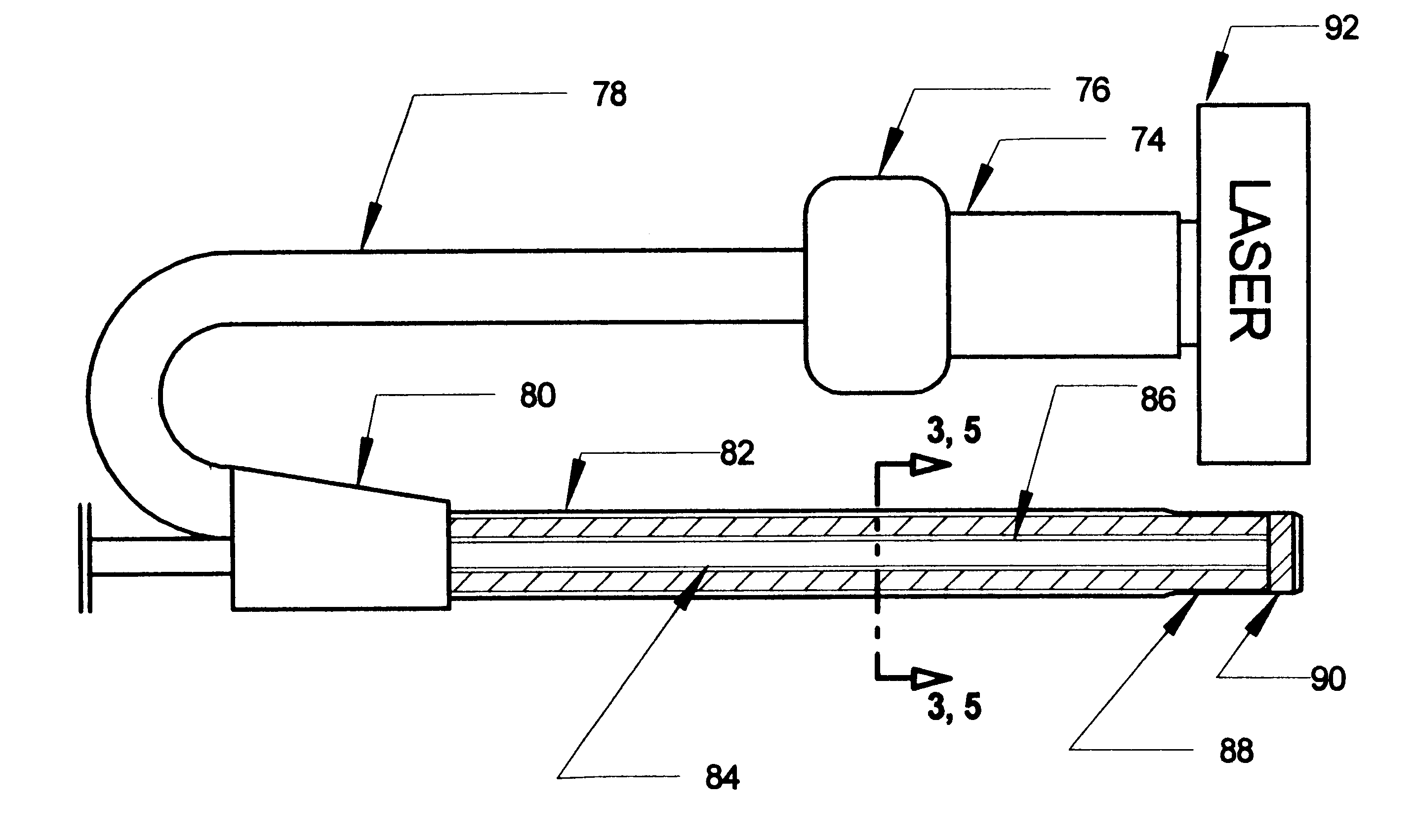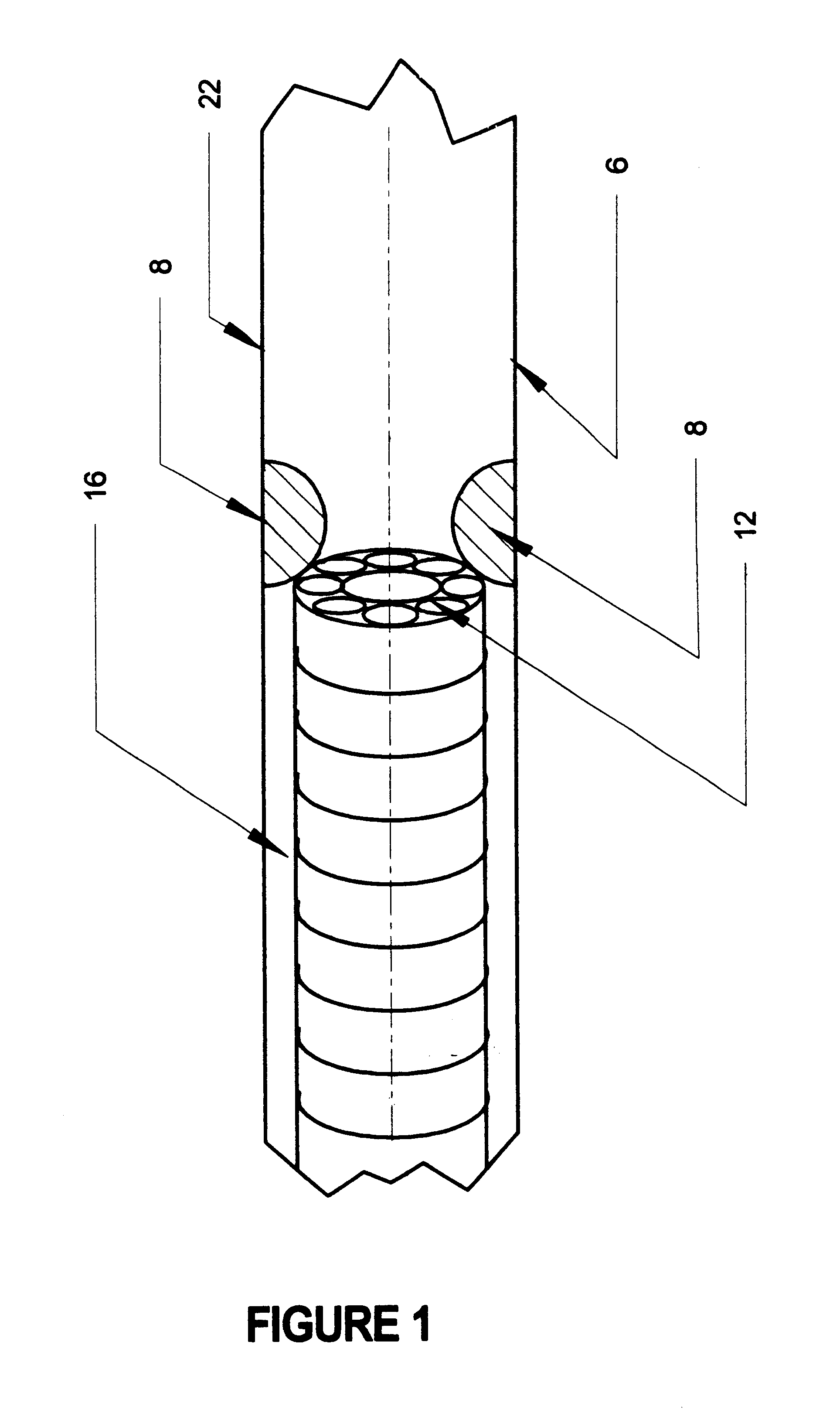Excimer laser catheter
a laser catheter and laser technology, applied in the field of catheters, can solve the problems of occlusion of the vessel, inability to ablate calcium with commercially available catheters, and increased so as to achieve the effect of increasing the likelihood of dissection and high energy outpu
- Summary
- Abstract
- Description
- Claims
- Application Information
AI Technical Summary
Benefits of technology
Problems solved by technology
Method used
Image
Examples
Embodiment Construction
Turning to FIG. 1, a coronary vessel 6 is shown having atherosclerotic blockage 8. A catheter contains optical fibers 12 and has a tip 16 that is inserted through the vessel 6 to reach the atherosclerotic blockage 8. An excimer laser that is connected to the catheter emits ultraviolet laser radiation energy through optical fibers 12. The laser radiation energy emerges from the catheter tip 16 to strike atherosclerotic blockage 8 to ablate the same.
The catheter tip 16 has a length of at least 1 centimeter and a diameter of less than 1 millimeter. Also, a guide wire 22 extends through a centerline of the catheter and is used in a conventional manner for guiding the catheter. Preferably, the tip length is at least 1 centimeter and up to 30 centimeters, although the optimal maximum length need only be as long as required for the catheter to come within laser striking distance of a lesion within the artery and traverse the lesion.
Presently available laser catheters that have tip diameter...
PUM
 Login to View More
Login to View More Abstract
Description
Claims
Application Information
 Login to View More
Login to View More - R&D
- Intellectual Property
- Life Sciences
- Materials
- Tech Scout
- Unparalleled Data Quality
- Higher Quality Content
- 60% Fewer Hallucinations
Browse by: Latest US Patents, China's latest patents, Technical Efficacy Thesaurus, Application Domain, Technology Topic, Popular Technical Reports.
© 2025 PatSnap. All rights reserved.Legal|Privacy policy|Modern Slavery Act Transparency Statement|Sitemap|About US| Contact US: help@patsnap.com



